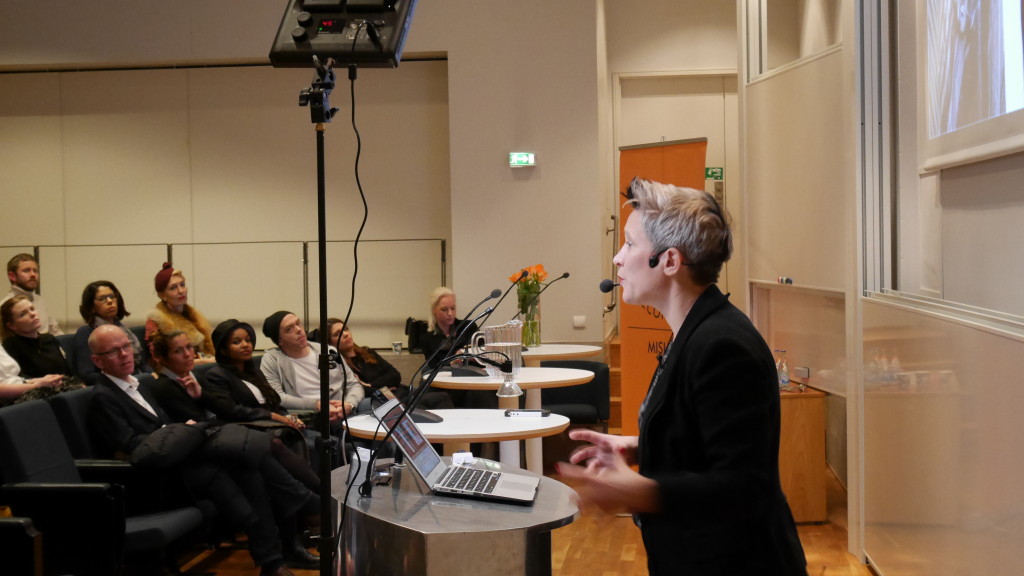Professor Rebecca Earley, researcher within Mistra Future Fashion and University of Arts London, was the first speaker during the Hybrid Talks event in February. Discussing the question “Should we be making fast fashion ultrafast?” she encouraged the audience to think about Ultra-fast fashion from a system perspective. Describing the need of a material solution for the speed of clothes Earley portrayed a positive, sustainable future using innovation – and paper-like fabrics.

On February 8th the event Hybrid Talks was held at Stockholm School of Economics. Hybrid Talks founder and director, Annika Shelly in collaboration with Misum, Mistra Future Fashion and Swedish Fashion Council invited the audience to an afternoon filled with micro-talks concerning innovation and sustainable fashion.
Professor Rebecca Earley opened with the question “Why is there a need for fast fashion to get faster?”. In order to give an answer she explains that we need to have an understanding of the concept of speed of clothes. At the moment, ‘fast’ within fashion is fast in manufacturing as well as in use, but slow in materials and the production of fibers: regardless if they are grown or taken from oil. Additionally, after the garment has being used for six weeks, which according to research is the average life expectancy of some clothing items, it ends up as landfill – resulting in harmful toxins in the earth and gasses in the air.
Rebecca Earley has a long and impressive experience within environmental research as the director of the Textiles Future Research Centre and researcher in Textiles Environment Design (TED) at Chelsea College of Arts. She is working towards developing strategies for designers in order to reduce environmental impact of textile production, consumption and disposal. She points out that fast fashion is not going away. Instead, there is a significant need to improve this fast cycle, especially when it comes to disposal.
The proposal Earley and Mistra Future Fashion highlight is to create materials that from the outset are ready to travel through the loops of disposal to destinations more useful than landfill. As such, the garment is ready to have an extended life and be cared for in an appropriate way. In other words, this means fast materials for fast fashion and slow materials for slow fashion. The research unveiled that there is a need for new business models when it comes to slow fashion, meanwhile the need within the fast sector is about radical new materials and systems. It is crucial to create a totally comprehensive understanding of the garment as a whole; what kind of garment and what kind of life expectancy it realistically has, as well as the different materials and how they are treated and processed.
Here, future collaborations as well as actions, across the different sectors, is essential in order to transform the industry. So, what might ultra-fast fashion look like? Earley asks. “Fast fashion could be paper, paper-like fabrics that you wear just a few times. You don’t wash it, so you don’t create laundry impacts and it gets recycled in your domestic paper-recycling”.
Watch Earley’s talk with Slides
For more information about the event and the other micro-talks, click here.



